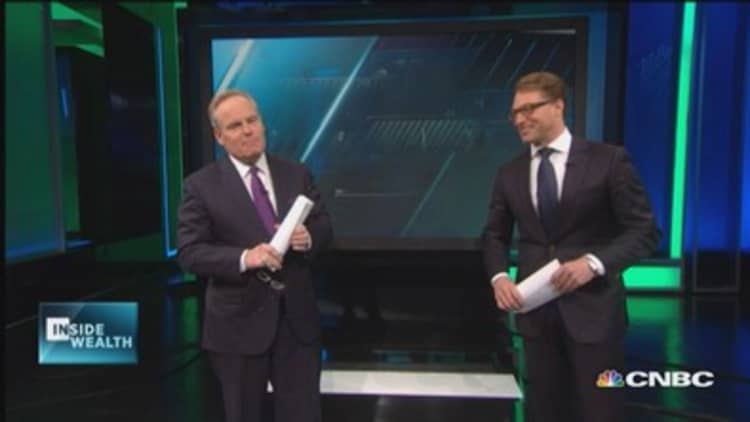The discussion of the 1 percent has portrayed them largely as a fixed group, a permanent plutocracy gaining ever more wealth and power.
But new research shows that 1 percenters are actually a highly fluid group, with Americans constantly falling into and out of the top tier. In fact, while many Americans will reach the 1 percent for at least a year, very few will stay.
A new study by economists Thomas Hirschl and Mark Rank, using the widely respected Panel Study of Income Dynamics, found that one in nine Americans will be part of the 1 percent for at least a year between the ages of 25 and 60.
It found that more than a third will reach the top 5 percent and 70 percent will reach the top 20th percentile.
"Rather than static groups that experience continual high levels of income attainment, there would appear to be more fluid movement into and out of these income levels," the study says.
Read MoreThe rich dogs of Instagram
Along with more Americans climbing into the 1 percent, a surprising number fall out. Only 0.6 percent of Americans remain part of the top 1 percent for 10 years.
"Only a few persist at this elite level," the report said.
The same is true for the super rich. A separate Internal Revenue Service study of the Fortune 400, or top earning 400 Americans who made at least $139 million in 2012, found that three-quarters of them only appeared on the list for one year between 1992 and 2012. Fewer than 10 percent of them were on the list for five years or more.
Read MoreGriffin divorce reveals lavish life
Hirschl said the findings show that American incomes are highly variable, soaring for a year or two because of a job change, bonus, big sales year or deal, and sometimes crashing due to a financial shock or change.
"People bounce around like crazy with incomes," Hirschl said. He said, for instance, that one of his relatives sells cars and trucks for a living. "Some years he'll have a great year and sell a lot of cars, and make a lot more than I do," Hirschl said. "And some years he'll make and sell a lot less. A lot of people's incomes vary from year to year. It's a trade-off in our society being so market driven."

Another way to look at the 1 percenters, especially those at the top of the 1 percent, is as one-hit wonders. They may have an outsize year due to selling a business or other asset, or getting a one-time bonus and report a giant income. But that won't be repeated the next year.
One percenters, in other words, are more like Right Said Fred ("I'm Too Sexy") or Chumbawamba ("Tubthumping") than enduring, gold-spinners stars like Madonna, Sting or Bono.
Read MoreWhat do the wealthy pay in taxes?
In policy terms, that means calls to tax the 1 percent are really calls to tax a far larger group than 1.1 million households. It means taxing the many millions of households who will be part of the 1 percent for a short period of time. In that sense, Americans who support higher taxes on the wealthy might be supporting higher taxes on themselves sometime in the future.
Perhaps Americans assume they'll never get there. Or perhaps they assume that if they become a 1 percenter, they can afford it. Either way, today's economic superstars may not be on top tomorrow, just like Chumbawamba.


